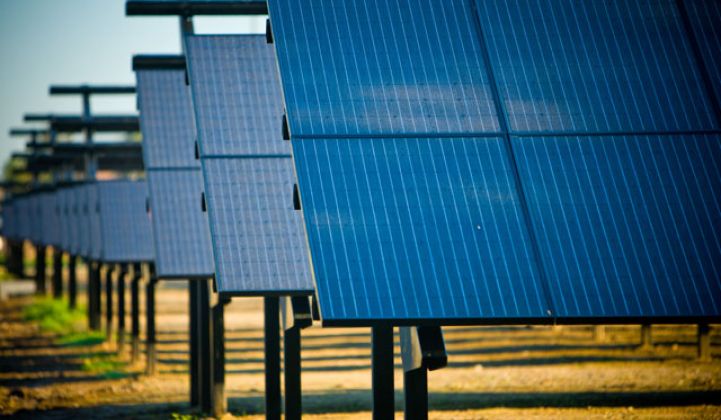The New York Power Authority and SUNY Polytechnic Institute will partner to build the world’s largest research and development facility focused on energy technology innovation.
New York State has goals of eliminating electricity peaks, enabling distributed energy resources and incorporating more large-scale renewables as part of its Reforming the Energy Vision proposal.
The yet-to-be-built facility, the Advanced Grid Innovation Laboratory for Energy (AGILe), will allow the New York Power Authority, distribution utilities and private companies to test everything from sensors on the grid and automation technology to novel power electronics and cybersecurity across the entire power grid.
“This is new and innovative and will allow New York state to lead the country in energy development, smart grid and other technologies and provide economic benefit to the state,” said Alan Ettlinger, head of R&D at the New York Power Authority. NYPA will serve as the energy advisor, and SUNY will own and operate the lab.
The facility will have more computing capability than other existing energy labs. “Many entities have the capability of simulating their own utility and distribution system,” said Greg Lennon, NYPA director of business development and AGILe program manager, but it is expected that AGILe will be able to do much more.
AGILe will not focus on either the transmission or distribution system, but will have the ability to simulate both. “We look at this as strategic planning for architecture and infrastructure,” said Lennon. “But also for market policy.”
New York is one of the few states where the transmission system is completely within the purview of the state’s independent system operator. That gives New York regulators the unique ability to innovate in market mechanisms at the wholesale level -- and at the distribution level -- with the REV initiative.
“The electric utility system is undergoing a revolutionary change, and this facility will place New York squarely at the vanguard of this transformation,” Richard Kauffman, New York’s chairman of energy and finance, said in a statement.
The modeling will allow the public service commission, utilities and other stakeholders to better understand how everything from electric vehicles, to microgrids, to new high-voltage transmission lines could provide value to the grid before they’re deployed.
For example, New York has already identified “opportunity zones” where there is grid constraint for potential microgrids. A lab that can model the entire state’s energy footprint will allow vendors to identify additional opportunities for microgrids or other distributed energy resources.
The distribution utilities that will be transformed into platform providers to manage the distributed resources coming onto the system will also benefit, as the facility will help them to test the technology needed to manage these transactions. “Many of the management systems on the distribution level aren’t sufficient to meet the future expectations of a changing grid,” Lennon said of today’s utility systems.
If the facility uses existing SUNY space, it could be open as early as 2016, but if it requires a new building, the timeline is more open-ended. NYPA has an outline of requirements for potential private sector partners, but has not yet put out an RFP.
Once it’s up and running, NYPA said some of the first applications would likely involve synchrophasors, advanced analytics and sensoring on the grid for automated applications.
Unlike some other utility or academic labs, the facility will be testing technology that will be deployed onto the New York grid. Ideally, the technology pioneered in the Empire State will then be exported to other states and regions that are investing in similar energy revolutions. “This isn’t R&D for the sake of R&D,” said Lennon.



